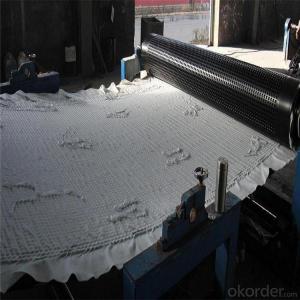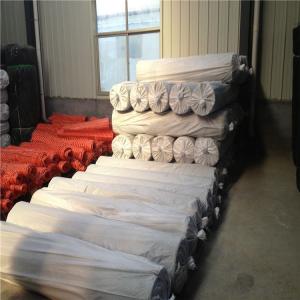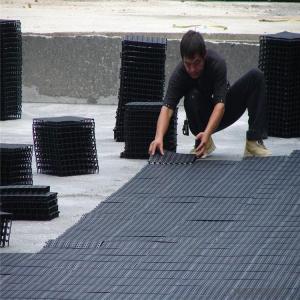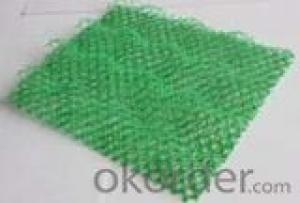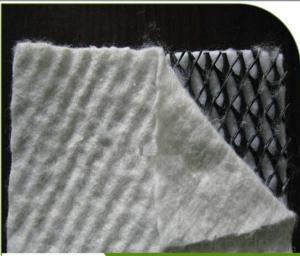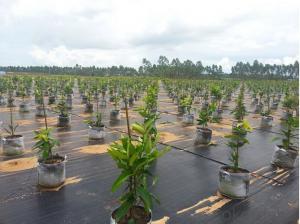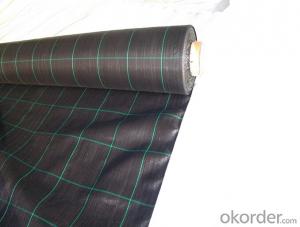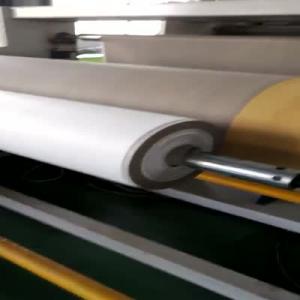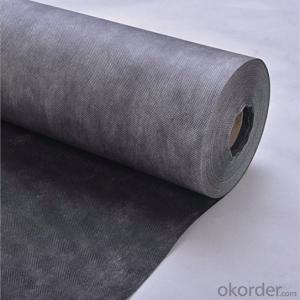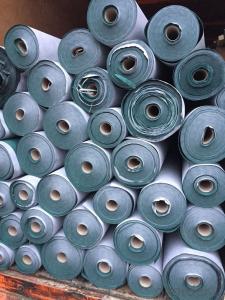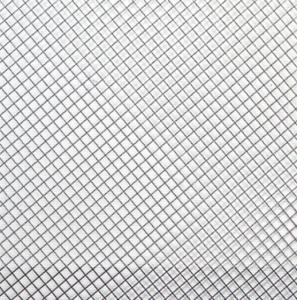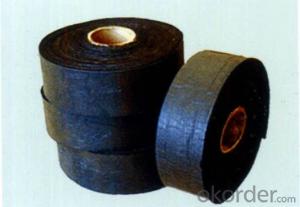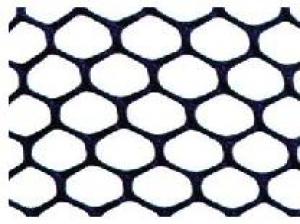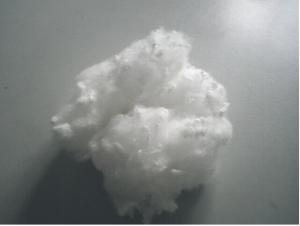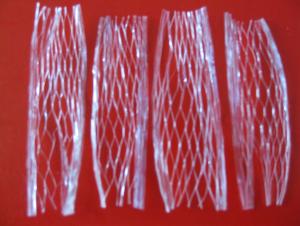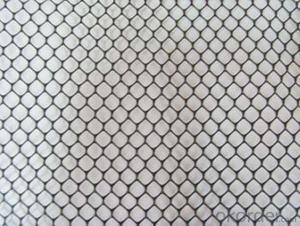Geonet with Ultravioresistant Manufacturer
- Loading Port:
- Qingdao
- Payment Terms:
- TT OR LC
- Min Order Qty:
- 1000 g/m²
- Supply Capability:
- 100000 g/m²/month
OKorder Service Pledge
OKorder Financial Service
You Might Also Like
Product Specification---3D Geomat
Introduction:
It is a kind of new 3D structural geosynthetics , which is applied in water and soil conservation
Features: Preventing soil erosion, increasing the greening area and improving the ecological environment
Function:
1.Before the greensward grows, it prevents the surface
of the land from the erosion of the wind and rain.
2 .Form compound protection layer with the plant ,
standing the wash-out of the high water level and large speed current.
3.Replace the concrete, asphalt, and block, using in the slope surface protection of roadway, railway, river-way, dyke, and the hillside, etc.
Properties of 3D Geomat ( three dimensional erosion control mat):
Spec Item | EM2 | EM3 | EM4 | EM5 |
Mass per unit area(g/㎡)≥ | 220 | 260 | 350 | 430 |
Thickness(mm)≥ | 10 | 12 | 14 | 16 |
Width(m)≥ | 2 | |||
Length(m)≥ | 30 | |||
Longitudinal tensile strength(KN/m)≥ | 0.8 | 1.4 | 2.0 | 3.2 |
Transverse tensile strength(KN/m)≥ | 0.8 | 1.4 | 2.0 | 3.2 |
Note: The special spec or size can be manufactured according to the demands of the contract | ||||
Properties of geonet
Item Spec | CE121 | CE131 | CE151 | CE181 | DN1 | HF10 |
Mass per unit area (g/㎡) | 730±35 | 630±30 | 550±25 | 700±35 | 750±35 | 124±60 |
Mesh size (mm) | (8±1)× (8±1) | (27±2)× (27±2) | (74±5)×(74±5) | (90±10)×(90±10) | (10±1)×(10±1) | (10±1)×(6±1) |
Width(m) | 2 or 2.5 | |||||
Length(m) | 50 or 40 | |||||
Maximum tensile strength (KN/m)≥ | 6.2 | 5.8 | 5.0 | 5.77 | 6.0 | 18 |
Note: The special spec or size can be manufactured according to the demands of the contract
Application:
1. Using the geonet on the roadbed of the roadway and railway can distribute the load effectively, improve the loading capacity and the stability of the roadway, and prolong its service life.
2. Spreading the geonet on the slope of road can prevent landslides, conserve water and soil, beautify the environment.
3. Spreading the geonet in the dyke protection in the reservoir and the river can protect it from the landslide.
4. Using the geonet in the coast engineering can amortize the concussion and the erosion of the
Images of Geonet
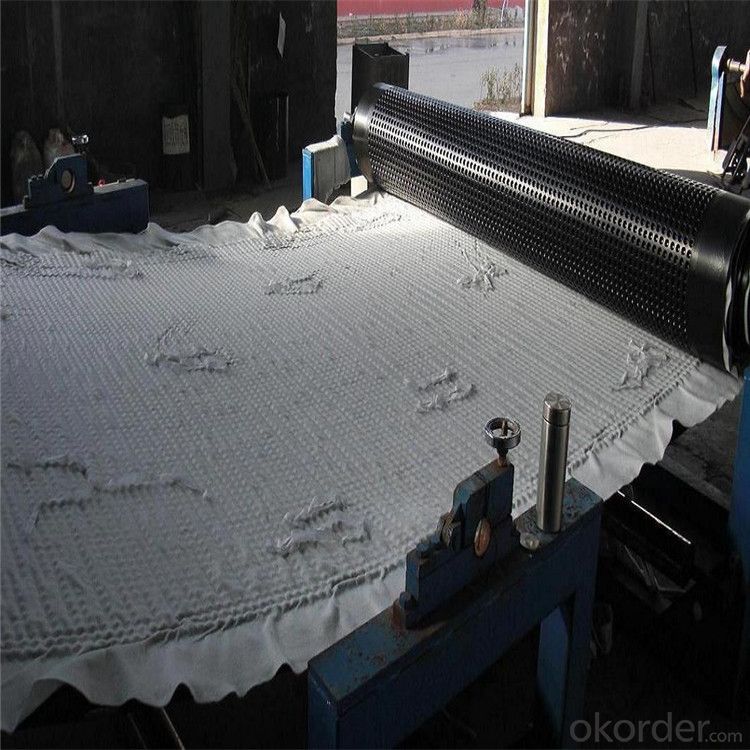
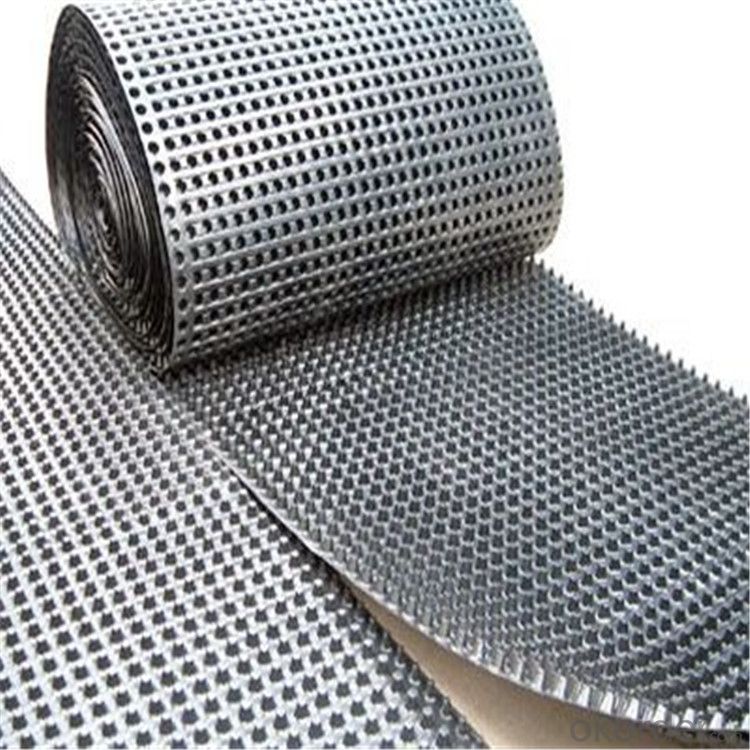
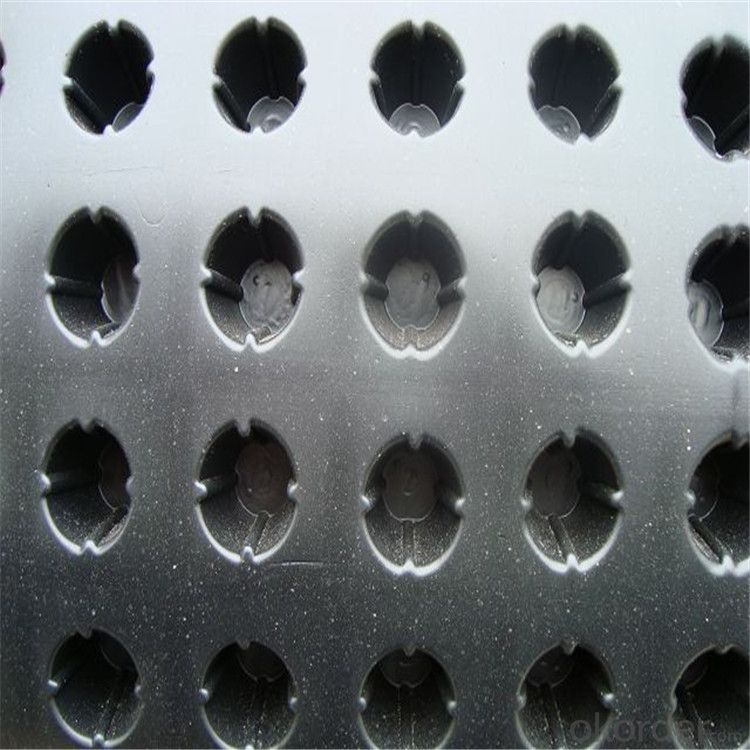



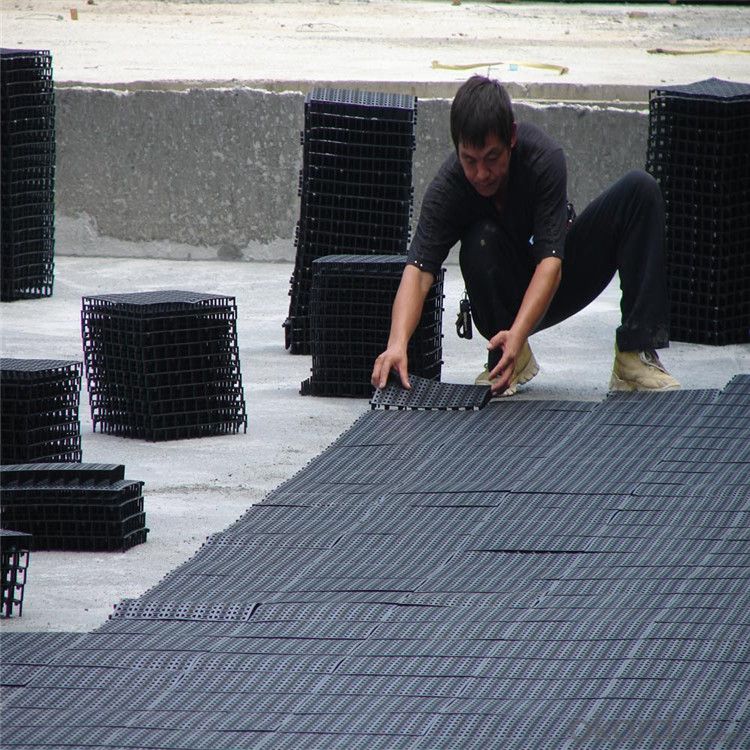
- Q:What are the weight limitations of earthwork products?
- The weight limitations of earthwork products can vary depending on the specific product and its intended use. Generally, earthwork products such as geotextiles, geogrids, and geomembranes are designed to withstand heavy loads and can support significant weight. However, it is important to consult the manufacturer's specifications and guidelines to ensure that the product is used within its recommended weight limitations for optimal performance and safety.
- Q:How do earthwork products help with water quality improvement?
- Earthwork products help with water quality improvement in several ways. Firstly, they can be used to create retention ponds or wetlands, which act as natural filters for pollutants and sediments. These structures capture and retain stormwater runoff, allowing time for sedimentation and the removal of harmful substances before the water is discharged into rivers, lakes, or underground aquifers. Additionally, earthwork products like permeable pavers or gravel trenches can be employed to construct infiltration systems that promote groundwater recharge. By allowing stormwater to infiltrate into the soil, these systems help reduce surface runoff and the transport of pollutants into water bodies. Overall, earthwork products play a crucial role in managing stormwater and protecting water quality by mitigating the impacts of urbanization and promoting sustainable water management practices.
- Q:How do earthwork products contribute to water conservation?
- Earthwork products, such as mulch and soil amendments, play a vital role in water conservation. Mulch acts as a protective layer, preventing evaporation of soil moisture and reducing the need for frequent watering. It also helps to regulate soil temperature, minimizing water loss through excessive heat. Soil amendments, on the other hand, improve soil structure and water-holding capacity, allowing plants to absorb and retain more water. By using these earthwork products, we can conserve water by reducing irrigation needs and promoting healthier, more resilient landscapes.
- Q:What is the relationship between the development of civil engineering and the material and the theory? What is the relationship with the needs of society?
- There are three major mechanics in civil engineering; theoretical mechanics; material mechanics; structural mechanics. The discovery of mechanics has also reduced the cost of engineering.
- Q:How do geosynthetic liners prevent leakage in waste containment systems?
- Geosynthetic liners prevent leakage in waste containment systems by providing a barrier that prevents the migration of liquids or gases through the containment system. These liners are made of materials such as high-density polyethylene (HDPE) or geomembranes that are impermeable, durable, and resistant to chemical degradation. When installed properly, geosynthetic liners create a secure barrier that effectively isolates waste materials, preventing leakage and potential environmental hazards.
- Q:What are the key considerations when using geosynthetic materials in dam construction?
- When using geosynthetic materials in dam construction, some key considerations include the type and quality of the geosynthetic material, its compatibility with the soil and other construction materials, design and installation considerations, and long-term performance and durability. It is essential to select the appropriate geosynthetic material that can withstand the specific site conditions and provide the necessary functions such as filtration, separation, reinforcement, or drainage. Compatibility with the soil and other materials is crucial to ensure proper interaction and performance. The design and installation process should be carefully planned and executed to ensure the geosynthetic materials are properly integrated into the dam structure. Finally, long-term performance and durability should be assessed to ensure the geosynthetic materials can withstand the anticipated loads, environmental conditions, and potential aging factors over the dam's lifespan.
- Q:How do geocomposites help in drainage systems?
- Geocomposites help in drainage systems by providing a highly efficient and cost-effective solution for managing water flow. They consist of a combination of geotextiles and geonets, which work together to improve drainage performance. The geotextiles act as filters, preventing soil particles from clogging the drainage system, while the geonets provide a pathway for water to flow through. This helps to reduce the risk of water accumulation, soil erosion, and structural damage. Additionally, geocomposites are easy to install and maintain, making them a preferred choice in various drainage applications.
- Q:How are geotextile tubes used in shoreline restoration projects?
- Geotextile tubes are used in shoreline restoration projects to create barriers or structures that help protect the shoreline from erosion caused by waves, tides, and storms. These tubes are often filled with sand or sediment and placed along the shoreline to form dunes or breakwaters, providing stability and preventing further erosion. Additionally, the geotextile material allows for water drainage while retaining the sediment, promoting natural vegetation growth and enhancing the overall ecological function of the shoreline.
- Q:What are the benefits of using geosynthetic reinforcements in foundation applications?
- Geosynthetic reinforcements offer several benefits in foundation applications including increased stability, improved load-bearing capacity, and enhanced soil reinforcement. These materials help prevent soil erosion, reduce settlement, and distribute loads more evenly, resulting in a longer lifespan for foundations. Additionally, geosynthetics are cost-effective, easy to install, and environmentally friendly alternatives to traditional reinforcement methods.
- Q:What are the specific applications of geocells in earthwork projects?
- Geocells, also known as cellular confinement systems, have several specific applications in earthwork projects. These include soil stabilization, erosion control, slope protection, load support, and retaining wall construction. Geocells can be filled with various materials, such as soil or aggregate, to enhance their performance in these applications. They provide structural reinforcement, increase the bearing capacity of the ground, prevent soil erosion, and promote vegetation growth. Overall, geocells offer cost-effective and eco-friendly solutions to improve the stability and longevity of earthwork projects.
1. Manufacturer Overview |
|
|---|---|
| Location | |
| Year Established | |
| Annual Output Value | |
| Main Markets | |
| Company Certifications | |
2. Manufacturer Certificates |
|
|---|---|
| a) Certification Name | |
| Range | |
| Reference | |
| Validity Period | |
3. Manufacturer Capability |
|
|---|---|
| a)Trade Capacity | |
| Nearest Port | |
| Export Percentage | |
| No.of Employees in Trade Department | |
| Language Spoken: | |
| b)Factory Information | |
| Factory Size: | |
| No. of Production Lines | |
| Contract Manufacturing | |
| Product Price Range | |
Send your message to us
Geonet with Ultravioresistant Manufacturer
- Loading Port:
- Qingdao
- Payment Terms:
- TT OR LC
- Min Order Qty:
- 1000 g/m²
- Supply Capability:
- 100000 g/m²/month
OKorder Service Pledge
OKorder Financial Service
Similar products
New products
Hot products
Hot Searches
